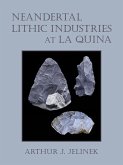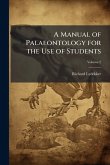In December 2010, scientists discovered a fragment of a finger bone in the remote, isolated Denisova Cave in Siberia. To their surprise, the bone contained neither Homo sapiens nor Neanderthal DNA. Rather, the fast-advancing science of paleogenetics revealed that the DNA came from a previously unknown species of hominids--the Denisovans (as they almost immediately came to be called)-- who shared a common ancestor with both Neanderthals and Homo sapiens. This first and subsequent Denisovan fossil discoveries required paleoanthropologists, including world-leading researcher and author Silvana Condemi, to reconsider their understanding of our ancestors and their successive prehistoric migrations out of Africa and into and throughout Eurasia tens of thousands of years ago. Leading us through the excavation of Denisova Cave, the sequencing of the Denisovan genome, and recent fossil research, Condemi and her coauthor, science journalist François Savatier, explore how the Denisovans migrated throughout Asia and with whom they interacted along the way, as well as the comparisons and divergences between the evolutionary processes of Denisovans and our other ancestor cousins, Neanderthals. They help us to understand and appreciate how today's inhabitants of East Asia--from Siberia to the Philippines-- carry up to 5 percent of Denisovan DNA, and they revise the epic story of our ancient human ancestors' immense journeys as they peopled our planet.
Bitte wählen Sie Ihr Anliegen aus.
Rechnungen
Retourenschein anfordern
Bestellstatus
Storno





![Kiliani Stobaei, ... Opuscula In Quibus Petrefactorum, Numismatum Et Antiquitatum Historia Illustratur... [cum Autoris Vita]... Kiliani Stobaei, ... Opuscula In Quibus Petrefactorum, Numismatum Et Antiquitatum Historia Illustratur... [cum Autoris Vita]...](https://bilder.buecher.de/produkte/74/74792/74792011m.jpg)


